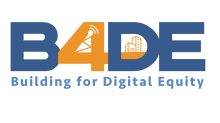
The FCC’s Universal Service Fund (USF) has survived a Supreme Court challenge by a right wing activist nonprofit, but the program – which for decades has helped extend broadband to underserved rural homes and schools – still faces a precarious immediate future.
It is a peculiar political story, given that the rural regions that overwhelmingly vote for Republicans are now seeing Republicans try to dismantle a program that has been crucial for rural investment and development.
The FCC established the fund in 1997 in compliance with the Telecommunications Act of 1996. Historically a program with broad, bipartisan support, the USF leverages around $8 billion annually to expand broadband access to rural communities, libraries, and schools. The program is primarily paid for by consumers via a small levy on traditional phone lines.
In 2023, a right wing activist nonprofit named “Consumer’s Research” sued the government over the USF, claiming that the FCC lacked the constitutional authority to levy a fee on consumers’ bills. The lawsuit claimed that the USF depended on what amounted to an “unconstitutional tax” on consumers to fund operations.

Initially, the group’s claims were laughed out of court, with both the 6th and 11th circuit appeals courts ruling against the group. But last fall, the Trump Republican-dominated 5th circuit initially also ruled in favor of USF before reversing itself in an en banc decision in favor of Consumer’s Research, declaring the USF an illegal tax, and throwing a long beneficial and traditionally non-controversial program into disarray.
Last November, the Supreme Court stated that it would review the 5th Circuit ruling. And on June 27 the Supreme Court ruled 6-3 in favor of the FCC, overturned the 5th Circuit decision, ensuring that the Universal Service Fund would survive another day.
The ruling declared that the USF is above board and legal, as is the agency’s use of a private nonprofit organization – the Universal Service Administrative Company (USAC) – to administer the fund.
Ultimately, the Court said:
"The Administrator is broadly subordinate to the Commission: The Commission appoints the Administrator's Board of Directors, approves its budget, and requires the Administrator to act 'consistent with' its rules and directives."
The ruling was quickly celebrated by broadband consumer groups.
"Today is a great day,” said Benton Institute for Broadband and Society Executive Director Revati Prasad. “We will need some time to sort through the details of today’s decision, but what matters most is that the Supreme Court has given the green light to the FCC to continue to support internet access to the tens of millions of Americans and the thousands of schools, libraries and rural hospitals that rely on the Universal Service Fund.”
“The Supreme Court’s decision confirms what we have known for decades: Congress lawfully delegated to the FCC the ability to ensure universal and affordable connectivity through its Universal Service Fund,” said Gigi Sohn, Executive Director of the American Association for Public Broadband.
An Existential Threat Still Lingers Just Over The Horizon
While the USF has avoided an untimely death at the hands of Republican activists, the program still faces a longer-term existential and financial threat. The USF’s budget primarily consists of funding through fees on some telecom services that are commonly found on traditional copper-based phone networks, a contribution base that’s consistently shrinking in the modern cellphone and social media era.
“As welcome as this decision is, the underlying threat to the Universal Service Fund remains, with the program's funding shrinking by the day,” said Sohn. “This, along with the expiration of the extremely popular Affordable Connectivity Program, means that the promise of the USF program – to deliver affordable broadband directly to homes, schools and libraries, and rural communities – remains unfulfilled.”

Congress will now be tasked with figuring out how to fund and improve the USF.
Currently, broadband-only providers contribute nothing to the USF. Efforts to expand the USF contribution base to include broadband connections have seen little traction under Democratic or Republican administrations.
While the FCC can modernize USF without Congressional action, the courts would ultimately decide whether the FCC has the authority to expand its contribution base under present law and how far the FCC could go to subsidize Internet access while it is classified as a Title I service.
A favored solution by many large telecoms – and key Republicans like FCC boss Brendan Carr – has been to instead impose a new tax on streaming video providers that will inevitably be passed on to consumers.
In an ideal world, having tech giants contribute to funding rural broadband expansion makes sense. But Republican mismanagement of major broadband subsidy programs (see: RDOF) looms large in the rear-view mirror, and telecoms like AT&T have long eyed big tech companies’ fat social media profits with less than good faith intent.
The two in concert could result in reforms that don’t prioritize rural broadband expansion as much as they create a poorly-managed slush fund designed primarily to shift revenues from large tech companies into the back pocket of large telecom providers. Empty lip service toward “bridging the digital divide” could easily provide a perfect distraction.
The telecom industry has spent decades claiming that Big Tech companies get a “free ride” on the Internet, despite spending countless billions on bandwidth, transit infrastructure, cloud storage, and even deep ocean cable runs. In some instances, tech companies like Google also operate as last mile Internet Service Providers.
“Taxing entertainment and media companies to subsidise telcos was a bad idea in 2012, and the same is true today,” Netflix executives wrote in a 2023 editorial about such a streaming tax. “We need to move on from the debates of yesteryear and recognise that when we work together, and both invest in our respective strengths, we all thrive.”

Such efforts popped up again last May with the introduction of the Lowering Broadband Costs for Consumers Act of 2025 (S. 1651), sponsored by U.S. Senators Markwayne Mullin, Mark Kelly, Mike Crapo, and Kevin Cramer. The law would update Section 254 of the Communications Act to make tech companies pay into the USF.
Contrary to the bill’s name, it would not lower broadband costs for consumers. It would, however, increase the consumer cost of streaming services that are already getting too expensive for many consumers’ liking. It might actually result in expanded broadband access, but only if the program expansion is competently crafted and managed.
But under the Trump administration – which has proven hostile to consumer protection, monopoly oversight, and community broadband networks – who gets this expanded funding would be a serious point of contention.
Expanding U.S. subsidy programs without reforming enforcement – or taking more direct aim at the regional telecom monopolization responsible for high U.S. broadband prices and spotty coverage in the first place – could create new problems.
U.S. telecom subsidy programs have a long, long history of giants like AT&T and Verizon taking billions of dollars for networks they then fail to deploy. They’re routinely defrauding U.S. subsidy programs because the federal government routinely fails to hold these companies accountable
Ideally and theoretically, expanding the USF contribution base to include streaming video providers could actually result in expanded broadband access. But if not implemented intelligently in the legislative debates to come, such an expansion could easily wind up being a boondoggle for the ages.
Last week, Broadband Breakfast discussed this topic on a panel that included Christopher Mitchell from the Institute for Local Self-Reliance. You watch that discussion below:
Header image of US Supreme Court hearing room courtesy of Wikimedia Commons, Creative Commons, Attribution 2.0 Generic
Inline image of US Supreme Court building on clear day courtesy of Wikimedia Commons, Creative Commons, Attribution-ShareAlike 3.0 Unported
Inline image of FCC patch on blue table courtesy of jeanbaptisteparis on Flickr, Creative Commons, Attribution-ShareAlike 2.0 Generic
Inline image of utility worker deploying aerial fiber in rural community courtesy of USDA, Creative Commons, Public Domain Mark 1.0 Universal







